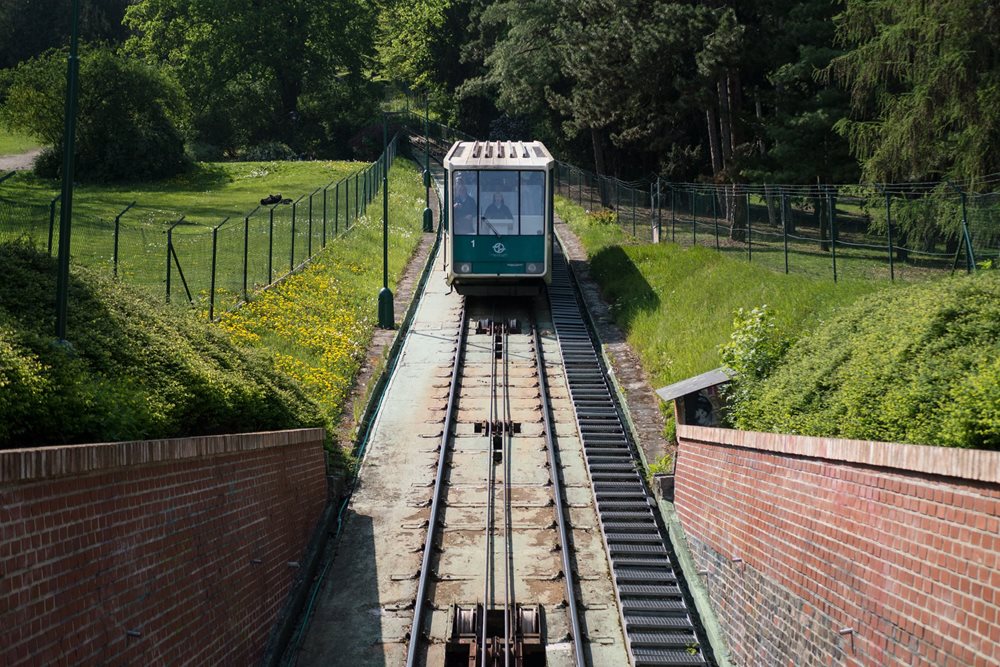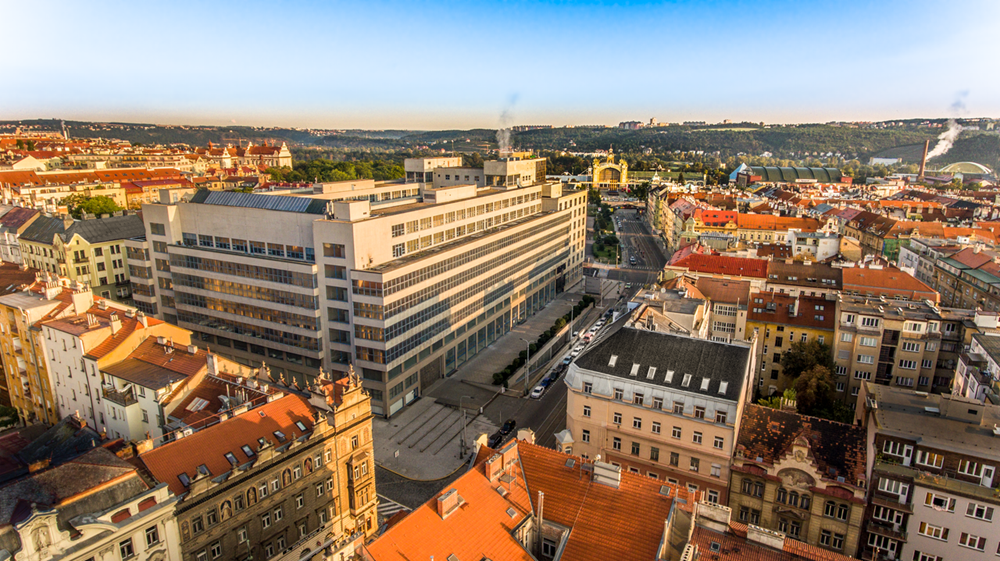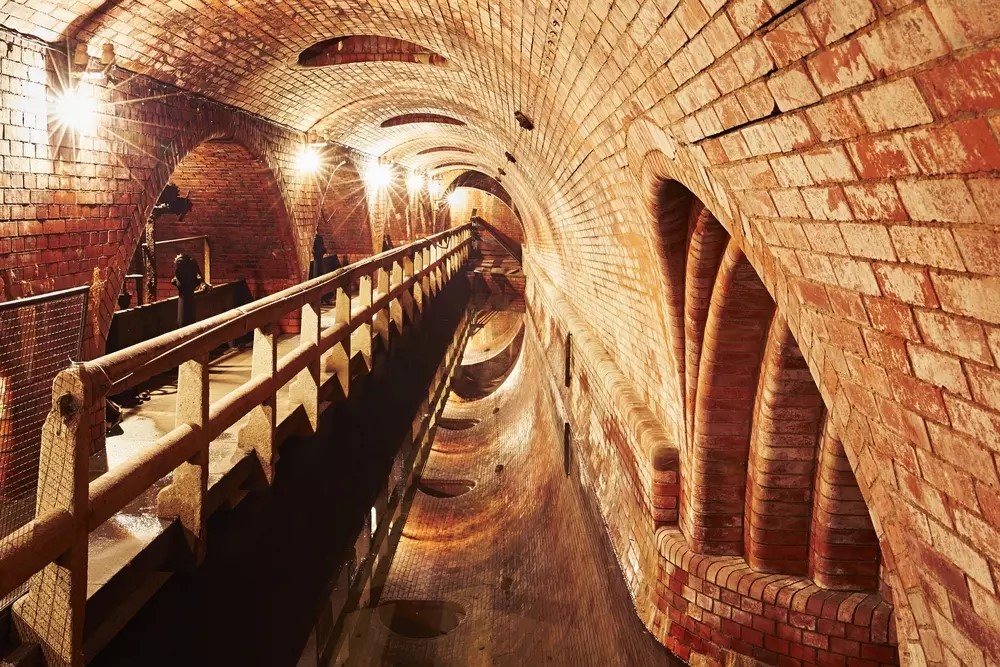Industrial architecture is on trend. Old halls, factories, mills, machine works and other monuments are gaining in popularity across all generations. Some of these structures still serve their original purpose, while others have gained a new purpose and have been transformed into museums, bars and meeting places. Do you know where to find the most interesting technical monuments in Prague?
Cable car to Petřín and Petřín Lookout Tower
Both technical structures were inspired by Paris and it was originally planned to open them in 1891, the year in which a magnificent Jubilee Expo was held in Prague. It represented the technical progress of the then modern world. Everything went to plan and both were open on time. The first cable car took its passengers up to Petřín on 25 July 1891. The propulsion was designed in a rather interesting way – it ran on water. A specific volume of water was pumped into the upper carriage of the cable car so as to weigh down the bottom carriage, and the driver of the cable car simply braked. In 1931, its operation was switched to electricity and its current operation is based on renovations completed in 1985. The cable car to Petřín is now located in Malá Strana in Újezd and has a total of 3 stops. In fact, it is a hybrid between a cable car and a train. The carriages run on rails that are simultaneously pulled by a steel rope. And what about the Petřín Lookout Tower? The inspiration for its design is obvious – the Petřín Lookout Tower loosely copies the Eiffel Tower in Paris. And just like the cable car, the Tower was built by enthusiasts for the Jubilee Expo in 1891. This year, the Petřín Lookout Tower is celebrating its wonderful 130th anniversary. It is still in perfect shape, recently undergoing a complete renovation, and from its top you will take in one of the most beautiful views of Prague.
Trade Fair Palace (Veletržní palác)
Trade Fair Palace is a building in the Holešovice district of Prague and is one of the first and largest Functionalist buildings in Prague. It was intended for trade fairs, and was later the seat of foreign trade companies. The Palace was designed by architects Josef Fuchs and Oldřich Tyl, who won the architectural tender for its construction. It was built between 1925 and 1928. With a floor area of about 13,500 m2, it was at one time the largest building of its kind in the world. In the 1970s, the building completely burned down and a new use of the dilapidated building began to be sought. About 20 years later, the building was repaired and reopened. Today, Trade Fair Palace is the seat of the National Gallery in Prague, which houses permanent exhibitions including 1796-1918: Art of a Long Century and 1918-1938: The First Republic, and other exhibition spaces that it uses for short-term exhibitions which need larger space accommodations.
Negrelli Viaduct
The Negrelli Viaduct connects Masaryk Railway Station in Prague with the opposite bank of the Vltava River and leads, among other things, to the Karlín district. Historically, it is the first Prague railway bridge over the Vltava and the second oldest Prague bridge over the Vltava overall. With a complete length of 1,110 metres and combined 87 arches, it is the longest railway bridge in the entire Czech Republic. The bridge was put into operation in June 1850. Until the beginning of the 20th century, it was the longest railway bridge in Europe. Over the years, many modifications and repairs have taken place. The bridge was last completely renovated in its original form from 2017-2020, when it was completely deconstructed and literally no stone was left unturned. A total of 100 brick, sandstone and granite arches were renovated, eight of which extend beyond the Vltava River. A total of 19 arches had to be completely dismantled and reassembled according to the original plans under the supervision of the National Heritage Institute. If you love anything to do with railways, you must not miss this industrial monument when visiting Prague.
Wastewater treatment plant in Bubeneč
The old wastewater treatment plant in Prague in the Bubeneč district is an important industrial monument. It was built between 1901 and 1906 and was used for wastewater treatment until 1967. The treatment plant project was developed by English engineer Sir William Heerlein Lindley. It is one of the industrial monuments of Prague that offers tours to its visitors. You will see preserved spaces with the remnants of original technological equipment, both for the actual wastewater treatment and related operations, and to ensure the running of the engines. Among other things the tour features a walk through the steam engine room and boiler room. The old wastewater treatment plant has been a Czech National Cultural Monument since 2010 and, thanks to its uniqueness and preservation, it is currently striving to be listed as a landmark in the UNESCO World Cultural and Natural Heritage Sites list.
Departure Hall of the Prague Main Railway Station
Some of Prague's industrial monuments are, however, still functional to this day, and you may be walking on their premises without even noticing them. For instance, a beautiful example of a technical monument is the historic steel roof over the railway track and platform of Prague’s Main Railway Station. The historic steel Prague Main Railway Station platform hall, together with the Art Nouveau departure building, dominates the entire area near Wenceslas Square. The steel arched two-aisle Hall built in 1905 by a Prague-based steelworks is now a listed monument. It was completely renovated a few years ago so you can now admire a building that not only serves its original purpose, but is also a beautiful example of period architecture.









-(1).jpg?width=1920&height=1204&ext=.jpg)
